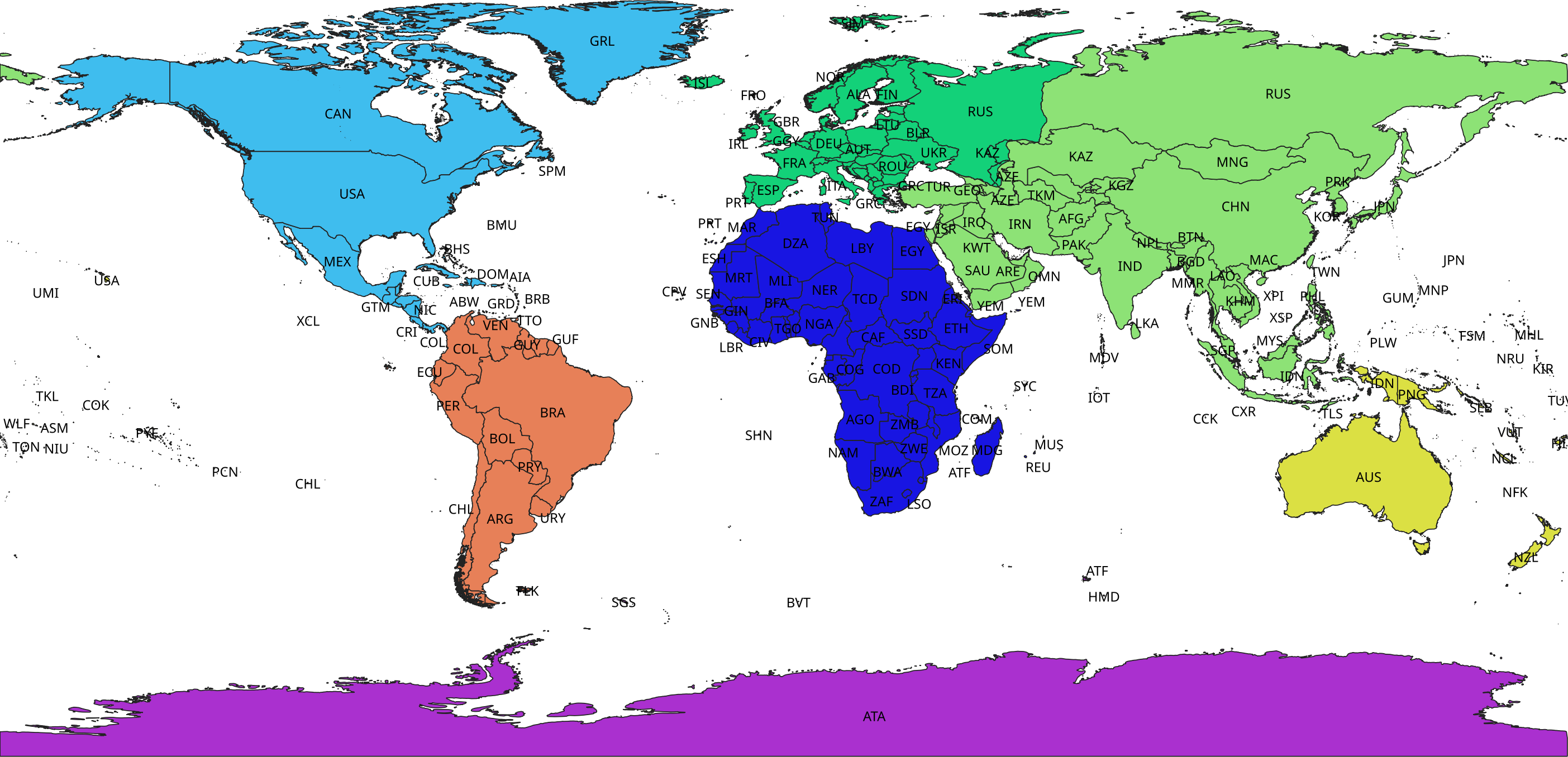- There are various definitions of continent. Ours should probably include continental islands (Tasmania in Oceania, Great Britain in Europe). It's also common to group the remaining islands with a "nearby" continent, so Fiji in Oceania etc.
- Does the continent include seas on the continental shelf? I.e. the Bass Strait and the English Channel.
- At what distance from the shore are occurrences no longer on any continent? We have a map for EEZs, but that's only political and presumably isn't useful here. (See https://labs.gbif.org/geocoder/ )
- If seas are part of a continent, where is the boundary to the ocean? We might already have a map for that, SeaVoX or IHO.
- (I mistakenly thought there was a DWC term
ocean, which might be the complement todwc:continent.)
Essentially, we need to define what our continents are, and either create a shapefile or (preferably) use someone else's.

Arctos has been having discussions (https://github.com/tdwg/dwc-qa/issues/128, https://github.com/ArctosDB/arctos/issues/3043, https://github.com/ArctosDB/arctos/issues/1291) about their higher geography, and as always, how the data are accessible on GBIF is of great interest.
I have been participating in their discussion and tracking down why things appear as they do, and my conclusion is that the continent parser approach to interpreting continent is not good. It is being treated as a simple vocabulary (https://github.com/gbif/parsers/blob/master/src/main/resources/dictionaries/parse/continents.tsv), relying on the incoming raw data and mapping them to the seven-continent model.
Nothing wrong with the seven-continent model. The problem is that the raw data don't necessarily follow it, or map unambiguously to it even if they share the same vocabulary (e.g., Oceania isn't the same for all data publishers even if the word matches exactly with a vocabulary value, see image below). Without GBIF being able to make sense of the data at the continent level, I believe there will be little incentive for people to actually model their continental geography in a way that is unambiguous.
The following image shows results of search for interpreted continent "Oceania" with suspicious coordinate locations removed. There are locations outside of the view provided as well, but this much is sufficient to illustrate the point that a string vocabulary match on a concept that is geographical is more problematic than helpful.
To index on continent without creating more chaos where less existed in the raw data, I think it would be a far better approach to add a simple layer in the geocode api for continents and use the coordinates to make that interpretation, along with a corresponding warning flag.
If you are concerned about the ~7% of occurrences that don't have interpreted decimal coordinates, a solution could be to use a vocabulary that takes advantage of the interpreted country code. The problem is, there would have to be some omissions or spurious assignments for the country codes that signify regions in more than one continent (RU, ES, CO, CL,EG,AZ,GE,KZ,TR,VE,US,FR,IT,PT,YE,GR). Well, OK, that list is too long, forget that idea.